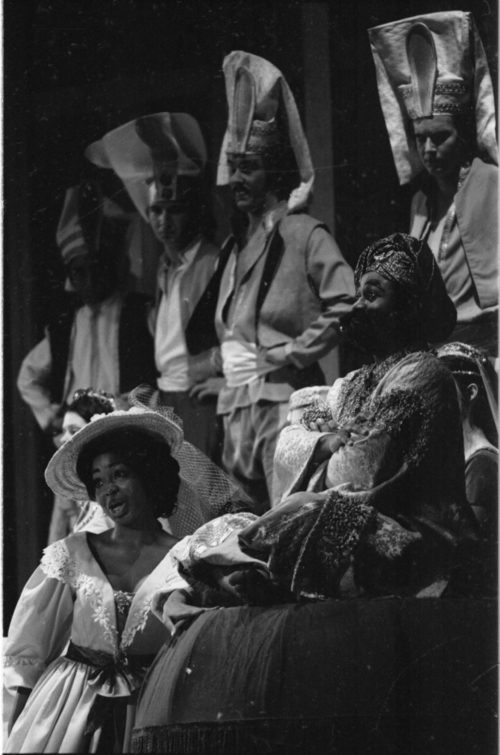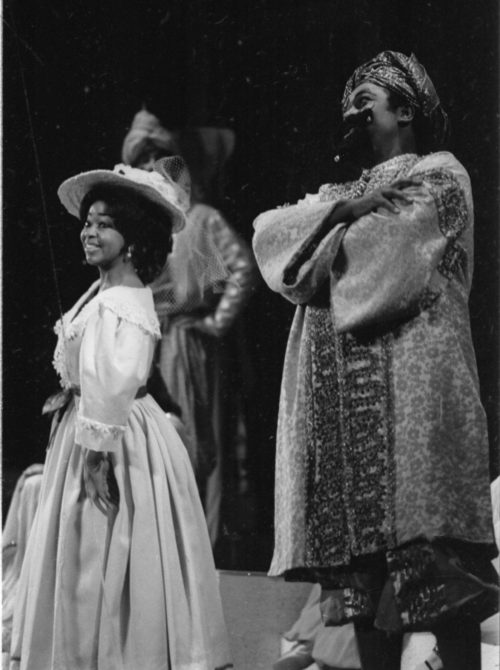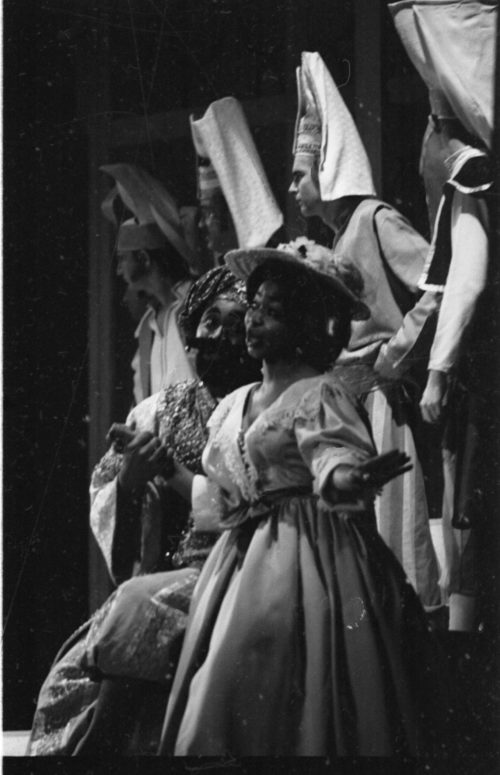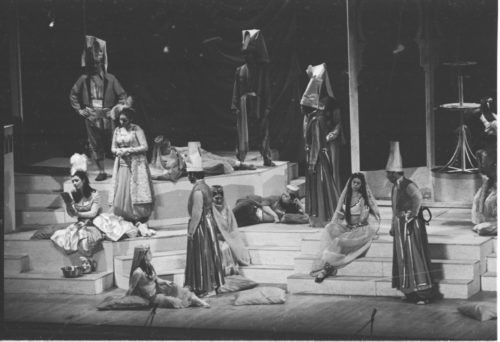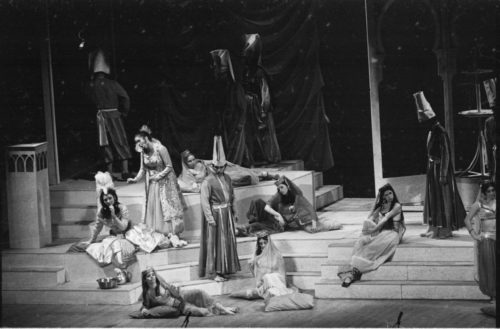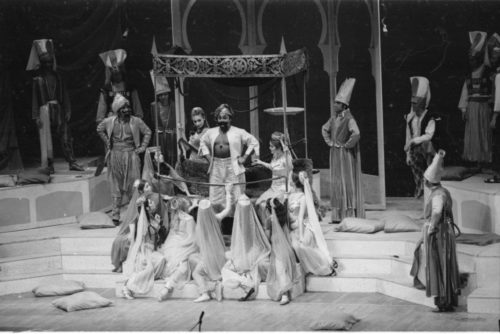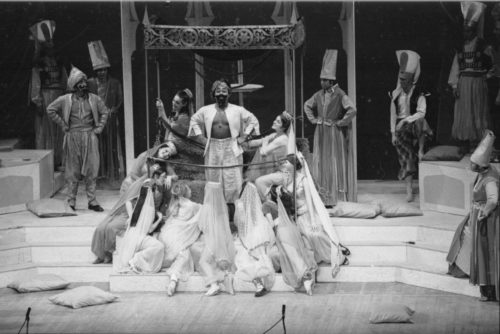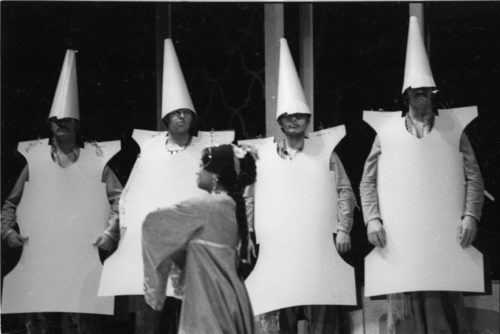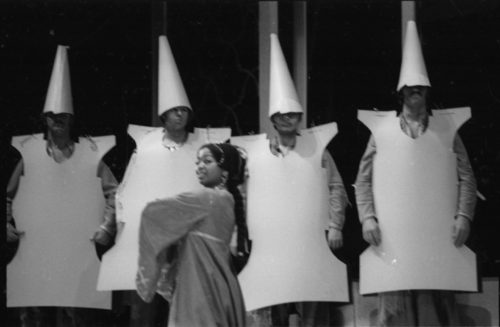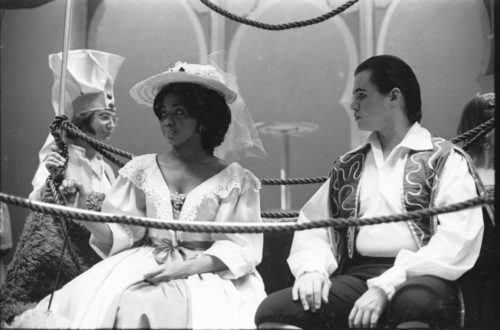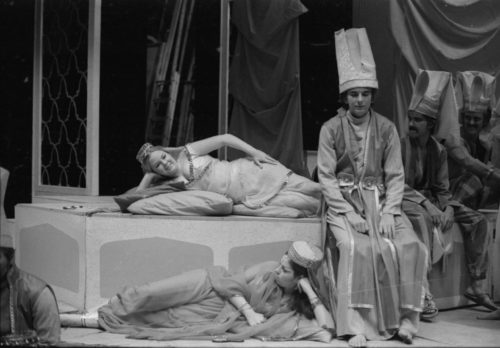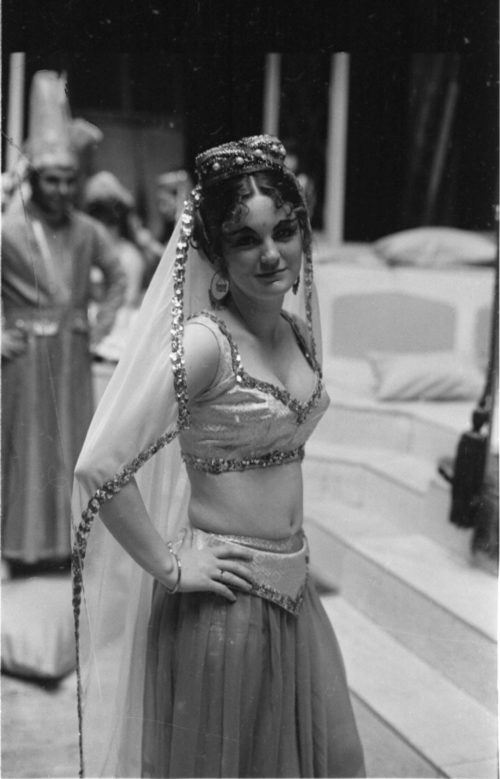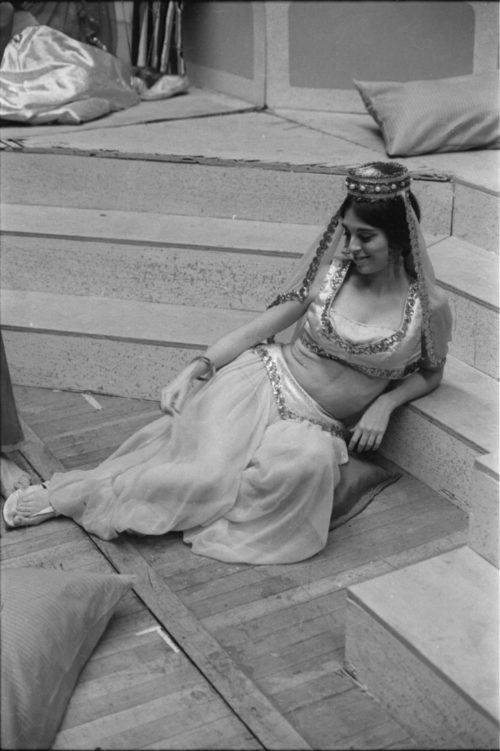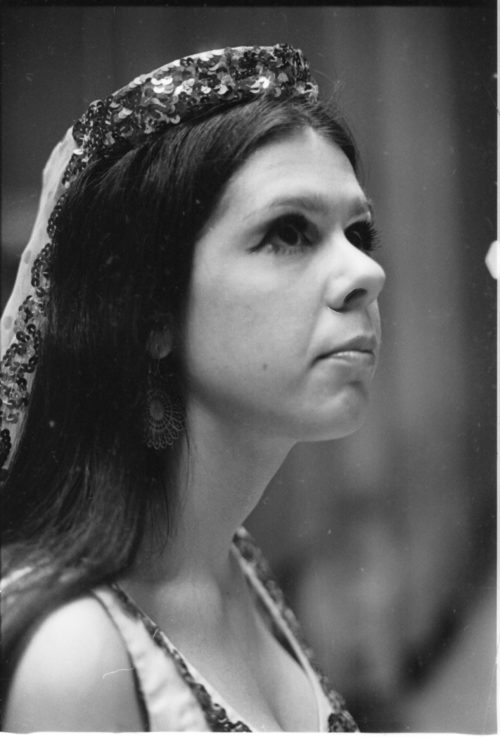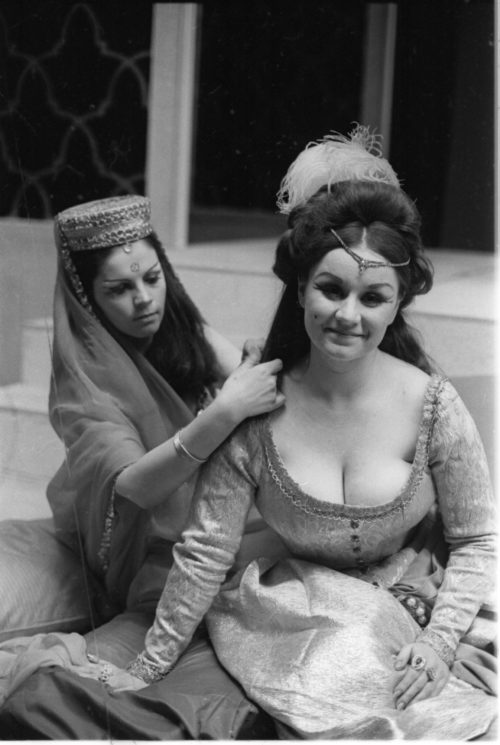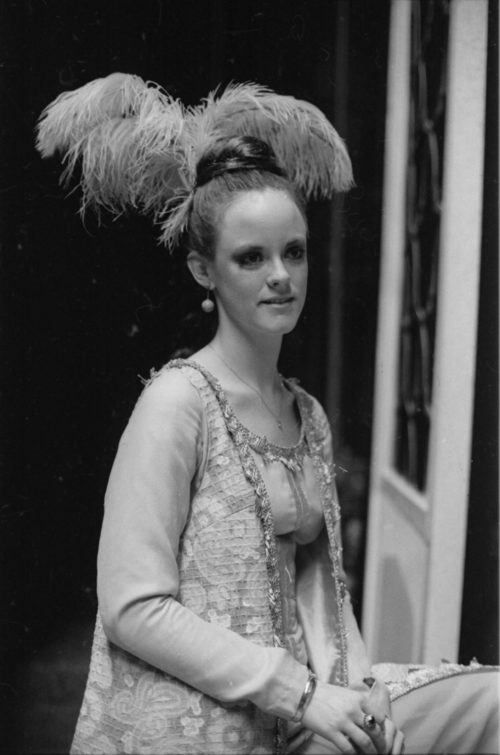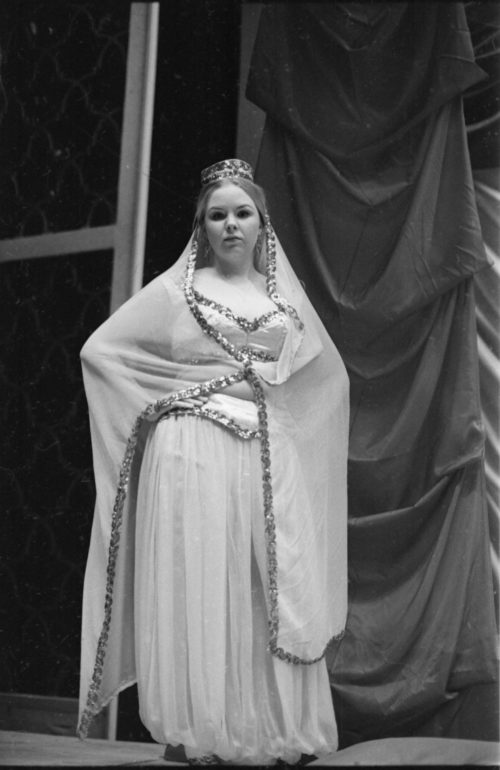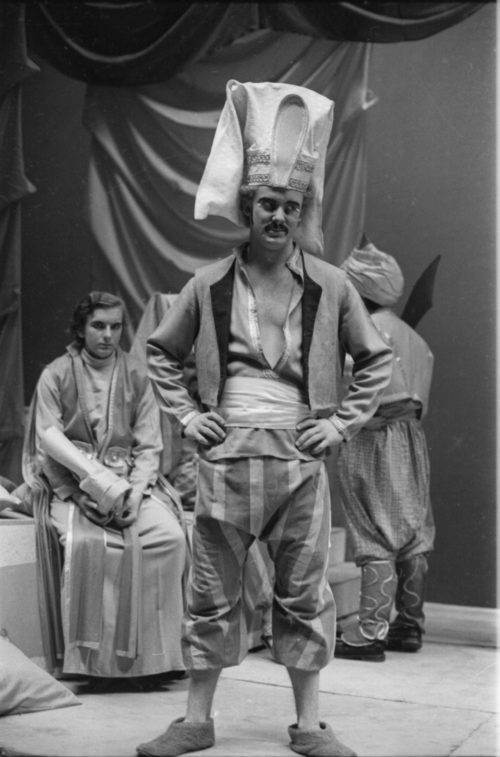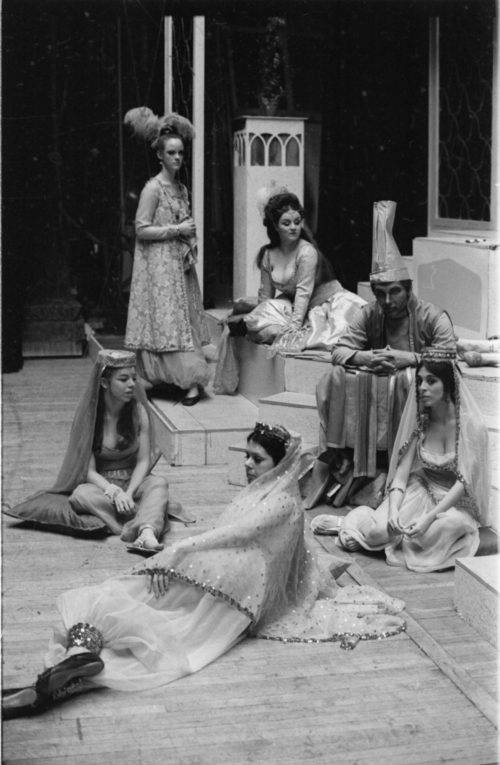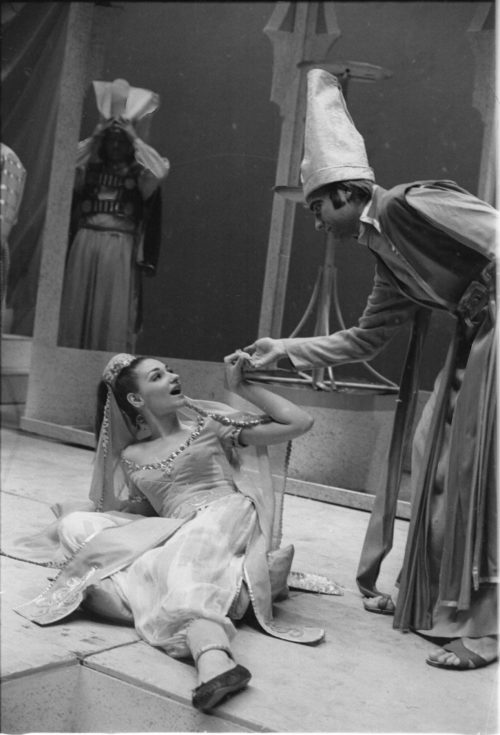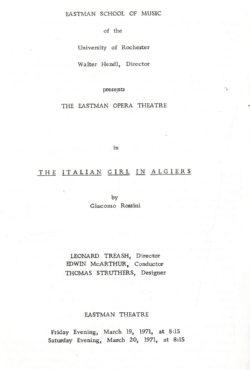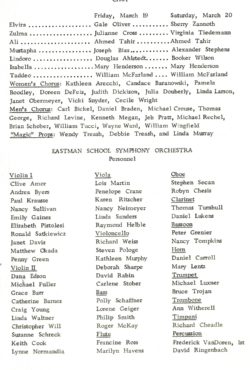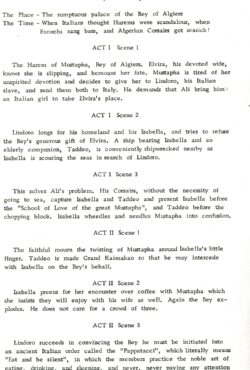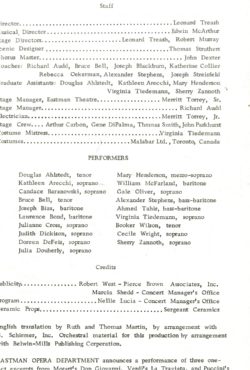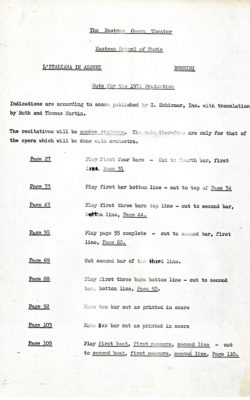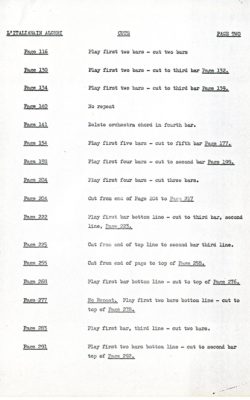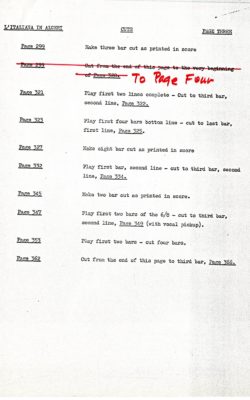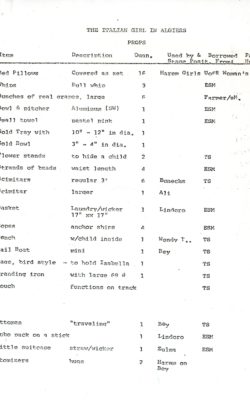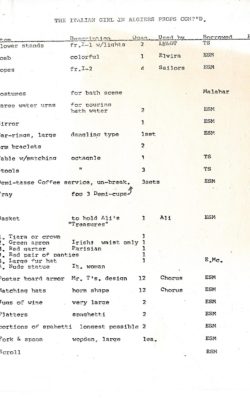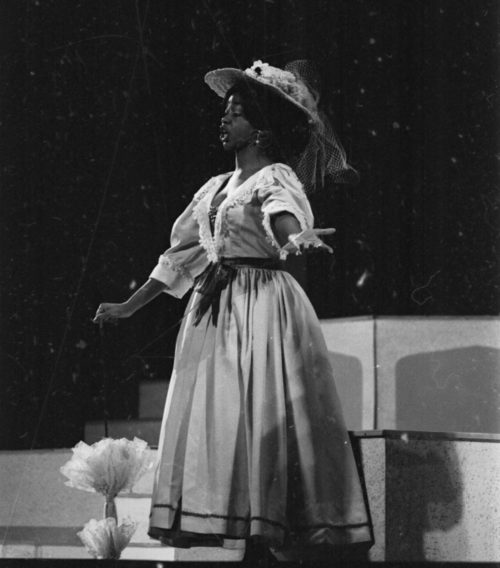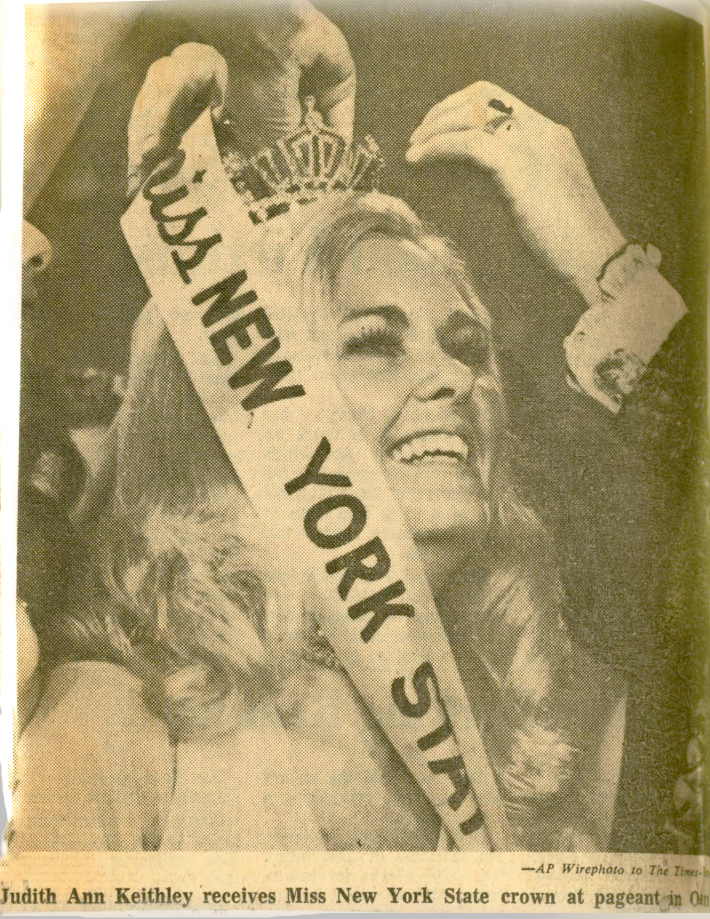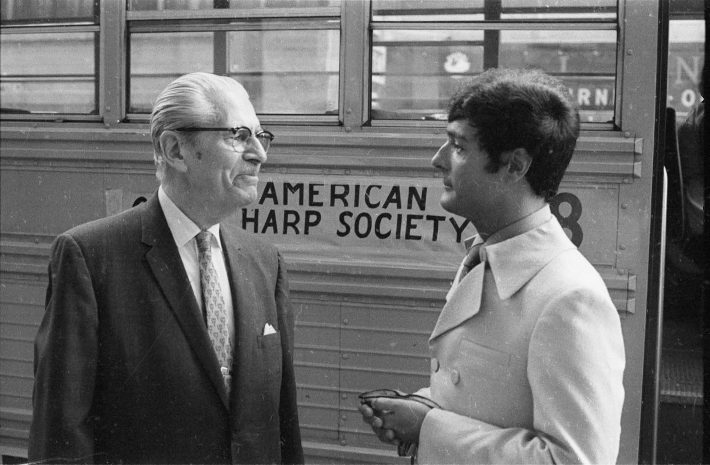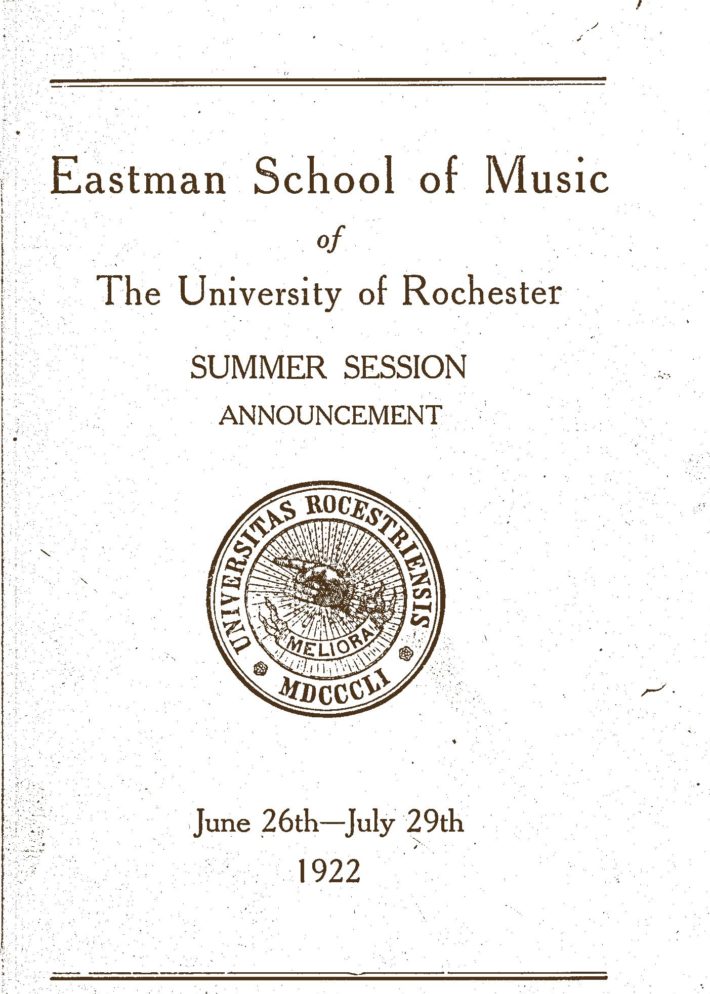1971: Rossini’s The Italian Girl in Algiers staged in the Eastman Theater
Isabella with Mustafa, the Bey of Algiers, who wants her.
► R1170-14A, R1170-15A, R1170-16A
Mustafa’s obedient harem in Act I.
► R1170-3A, R1170-4A, R1170-7A, R1170-8A
Isabella with four of the Eunuchs.
► R1170-31A, R1170-32A
Fifty-two years ago this week, on March 19th, 1971, Rossini’s opera The Italian Girl in Algiers (L’Italiana in Algeri) opened in the Eastman Theater for a two-night run. The production was directed by Leonard Treash[1]; the Eastman School Symphony Orchestra was conducted by Edwin MacArthur[2]; and the designer was Thomas Struthers[3]. The production marked the second staging at Eastman of The Italian Girl in Algiers; an earlier production in February, 1964 had been directed by Leonard Treash, nad a later production in October, 1980 would be directed by Richard Pearlman. (For the rest of this discussion I will refer to the opera by its Italian title, while acknowledging that the Eastman productions have been sung in English.) Apart from the frequent performance of scenes from Rossini operas in the end-of-semester Opera Scenes by students of the Voice & Opera Department, five Rossini operas have been produced in their entirety at Eastman. They have been La Cambiale di Matrimonio, staged as The Marriage Contract in June, 1938 (directed by Nicolas Konraty), and later as The I.O.U. Wedding in October, 1985 and in November, 1992 (both directed by Richard Pearlman); Cinderella, in February, 1955 (directed by Leonard Treash); Il Turco in Italia (The Turk in Italy), in October-November, 2002 (directed by Steven Daigle); and three productions of L’Italiana in Algeri (The Italian Girl in Algiers) (1964, 1971, 1980). In addition, Richard Pearlman directed a concert of concert of excerpts from La Gazza Ladra and Le Comte Ory in May, 1989.
►Memorandum detailing cuts to be made in the score. Leonard Treash Collection.
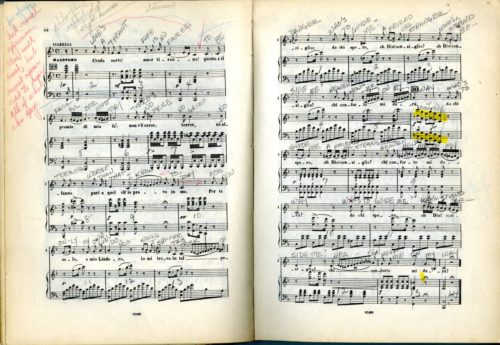
►Props list for the March, 1971 production. Leonard Treash Collection.
Gioachino Rossini (1792-1868) reigned supreme over Italian opera for the first half of the 19th century, until the arrival of Giuseppi Verdi (1813-1901) on the scene.[4] Between 1812, year of the premiere of Demetrio e Polibio, and 1829, year of the premiere of Guillaume Tell, fully 39 operas by Rossini were premiered on Italian stages. L’Italiana in Algeri, conceived and published as a dramma giocoso in two acts, was one of his early operas, commissioned for the Teatro di San Benedetto in Venice. The story was already known to the Italian audience, for the libretto by Angelo Anelli (1761-1820) had already been set by composer Luigi Mosca (1775-1824) and had been successfully staged at La Scala in 1808. In Rossini’s treatment, the work has been recognized as an example of opera buffa that adopted elements of the opera seria. Sources disagree as to how long it took Rossini to compose the opera, but the work appears to have written and completed in less than one month. The opera was premiered on May 22nd, 1813, when the composer was enjoying the flush of success that had followed the premiere of Tancredi three months earlier. L’Italian in Algeri was another instant success, and these two 1813 operas were what initially contributed to Rossini’s reputation outside of Italy. Today L’Italian in Algeri remains firmly in the repertory.
Set in the 18th century, the action of L’Italiana in Algeri surrounds that most timeless of themes, the pursuit of love (in whichever form: physical, romantic, erotic, you name it). The Bey of Algiers (think of him as the Sultan, or chief administrator) is bored with his harem, and conceives a notion to marry off his principal wife Elvira to his slave Lindoro, after which he will take to himself one of those beautiful Italian girls about whom he’s heard so much. Long story short, the lovely Isabella, the Italian girl of the title, is spotted and is presented to Mustafa, but in a hilarious sequence of events, she outwits him. The opera ends happily for everyone, or almost. Isabella and her beloved Lindoro escape on a ship bound for Europe, and Mustafa seems destined to remain with his faithful wife Elvira. In both of the March, 1971 performances, the role of Isabella was sung by Mary Henderson, BM ’70, MM ’72. Ms. Henderson (today Mary Stucky) went on to an operatic career in Europe, also performing in recital and oratorio in Europe and in the USA; she taught at Washington University in St. Louis and later at the College-Conservatory of Music (University of Cincinnati), eventually retiring as Professor Emerita of Voice. The other leading roles were played by the following:
Elvira: Gale Oliver, BM 1972; Sherry Zannoth, MM 1972
Zulma: Julianne Cross, MM 1973; Virginia Tiedemann, MM 1971
Ali: Ahmed Tahir, BM 1971
Mustafa: Joseph Bias, MM 1972; Alexander Stephens, BM 1971
Lindoro: Douglas Ahlstedt, MM 1971; Booker Wilson, MM 1973
Taddeo: William McFarland, BM 1972
Master tapes of both of the Eastman performances are extant in the Eastman Audio Archive; each cast recording clocks in at just over two hours and two minutes. Photographer Louis Ouzer was present on March 19th, 1971 at what appears to have been the dress rehearsal, and snapped a copious number of shots of the performers in action and in repose. In addition, director Treash’s two vocal scores (Ricordi and G. Schirmer) and various notes and production papers are preserved in the Leonard Treash Collection at the Sibley Music Library.
Future “TW@E” entries will comment on other Eastman productions as we approach Eastman Opera’s centennial in 2023-24.
[1] Served on the Eastman School faculty 1947-1976.
[2] Served on the Eastman School faculty 1968-1973.
[3] Served on the Eastman School faculty 1967-1975.
[4] More than one writer has pointed out that 1813 was an important year for opera. Verdi was born in October of that year, and on one and the same day, May 22nd, 1813, Wagner was born and L’Italiana in Algeri was premiered.


